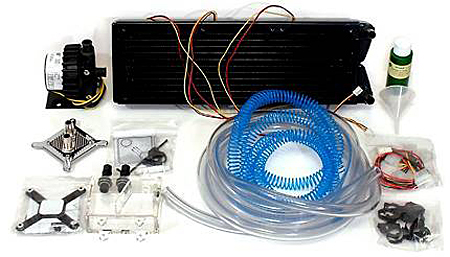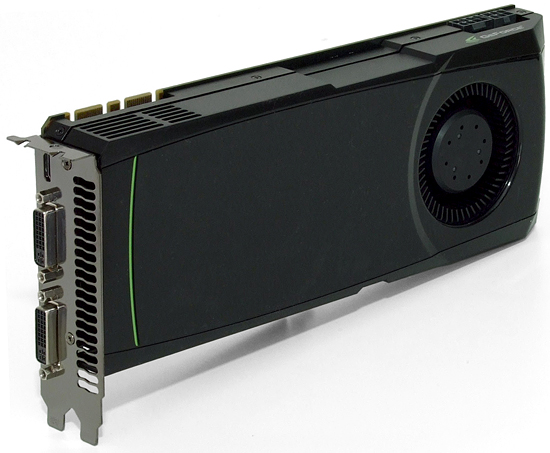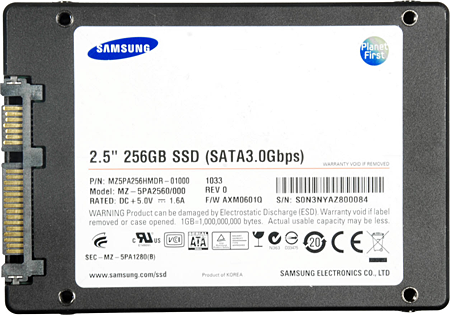Ultimate X79? Five $320+ LGA 2011 Motherboards, Reviewed
Our flagship motherboard comparison announcement was answered with an interesting selection of models, along with a bunch of “not ready yet” responses. Today we examine a few samples from companies bold enough to step up to the plate during launch week.
Test Settings
| Test System Configuration | |
|---|---|
| CPU | Intel Core i7-3960X (Sandy Bridge-E): 3.60 GHz, 15 MB Cache, LGA 2011, Turbo Boost enabled |
| CPU Cooler | Swiftech Apogee GTX, MCP 655b, Triple Fan Radiator Kit |
| RAM | G.Skill F3-17600CL9Q-16GBXLD 16 GB (4 x 4 GB) DDR3-2200 Benchmarked at 4 x 4 GB DDR3-1600 CAS 9 defaults |
| Graphics | Nvidia GeForce GTX 580: 772 MHz GPU, GDDR5-4008 |
| Hard Drive | Samsung 470 Series MZ5PA256HMDR, 256 GB SSD |
| Sound | Integrated HD Audio |
| Network | Integrated Gigabit Networking |
| Power | Seasonic X760 SS-760KM: ATX12V v2.3, EPS12V, 80 PLUS Gold |
| Software | |
| OS | Microsoft Windows 7 Ultimate x64 |
| Graphics | Nvidia GeForce 285.62 |
| Chipset | Intel INF 9.2.3.1020 |
A couple years have passed since I thought I needed a liquid cooling kit to overclock processors at safe voltage levels. But reports of high current loads at moderate settings forced me to reconsider my options. Previously mounted into a test station and left to languish over the same period, Swiftech’s Apogee GTX kit was resurrected and repurposed using nothing more than an LGA 1366 top bracket and a set of LGA 2011 mounting screws left-over from other projects.
G.Skills Ripjaws DDR3-2200 allows us to test the overclocking capabilities of each motherboard using one module per channel, and the basic performance of each board at default DDR3-1600 SPD values. The firm sent a second set for our eight-DIMM tests, using the same ICs but different XMP values.
Nvidia’s GeForce GTX 580 pushes our CPU limits under games.
Samsung’s MZPA256HMDR 256GB SSD keeps load times and idle power low.
| Benchmark Configuration | |
|---|---|
| 3D Games | |
| DiRT 3 | V1.01, Run with -benchmark example_benchmark.xml Test Set 1: High Quality Preset, No AA Test Set 2: Ultra Quality Preset, 8x AA |
| Metro 2033 | Full Game, Built-In Benchmark, "Frontline" Scene Test Set 1: DX11, High, AAA, 4x AF, No PhysX, No DoF Test Set 2: DX11, Very High, 4x AA, 16x AF, No PhysX, DoF On |
| StarCraft II | Version 1.4.1.19776, Tom's Hardware custom map Test Set 1: Medium Details, No AA, 8x AF Test Set 2: Highest Details, 8x AA, 16x AF |
| Audio/Video Encoding | |
| iTunes | Version 10.4.1.10 x64: Audio CD (Terminator II SE), 53 minutes, default AAC format |
| Lame MP3 | Version 3.98.3: Audio CD "Terminator II SE", 53 min, convert WAV to MP3 audio format, Command: -b 160 --nores (160 Kb/s) |
| HandBrake CLI | Version 0.95: "Big Buck Bunny" (720x480, 23.972 FPS) 5 Minutes, Audio: Dolby Digital, 48 000 Hz, Six-Channel, English, to Video: AVC Audio: AC3 Audio2: AAC (High Profile) |
| MainConcept Reference | Version: 2.2.0.5440: MPEG-2 to H.264, MainConcept H.264/AVC Codec, 28 sec HDTV 1920x1080 (MPEG-2), Audio: MPEG-2 (44.1 kHz, 2 Channel, 16-Bit, 224 kb/s), Codec: H.264 Pro, Mode: PAL 50i (25 FPS), Profile: H.264 BD HDMV |
| Productivity | |
| Adobe Photoshop CS5 | Version 12.1 x64: Filter 15.7 MB TIF Image: Radial Blur, Shape Blur, Median, Polar Coordinates |
| Autodesk 3ds Max 2012 | Version 14.0 x64: Space Flyby Mentalray, 248 Frames, 1440x1080 |
| WinZip | Version 15.5 Pro: THG-Workload (464 MB) to ZIP, command line switches "-a -ez -p -r" |
| WinRAR | Version 4.01: THG-Workload (464 MB) to RAR, command line switches "winrar a -r -m3" |
| 7-Zip | Version 9.22: THG-Workload (464 MB) to .7z, command line switches "a -t7z -r -m0=LZMA2 -mx=5" |
| ABBYY FineReader | Version 10.0.102.82: Read PDF save to Doc, Source: Political Economy (J. Broadhurst 1842) 111 Pages |
Get Tom's Hardware's best news and in-depth reviews, straight to your inbox.
-
lradunovic77 Something is wrong with your ASRock Extreme 9 testing. You article states that you used BIOS 1.40 however first release for this Motherboard was 1.60 and they also recently released 1.70. Bios 1.40 is for ASRock Extreme 4 which i own as well. Again in mean time they updated BIOS for ASRock Extreme 4 to version 1.50 which greatly improves overclocking. I have C1 and i am hitting 4.4Ghz easily. (1.50 BIOS ASRock Extreme 4).Reply
You might want re check the facts.
Thanks. -
Crashman lradunovic77Something is wrong ...You might want re check the facts.Please do verify the facts beginning with the first X79 Extreme9 UEFI screenshot on page 3, showing version P 1.40 . The latest public firmware was downloaded for every motherboard on November 18, which is before ASRock says its P1.60 was even published. And, if you check Newegg, you'll find that Newegg was actually selling the X79 Extreme9 before firmware P1.60 was published.Reply
How could that happen? ASRock has repeatedly removed previous BIOS versions from its website and labeled the replacement as the initial release.
This review was published after many hours of collaboration with ASRock, and some of the problems with this specific CPU are further detailed in the overclocking section. ASRock acknowledged the problem exists with a portion of the C1 CPU supply and has begun issuing patched BIOS to fix the multiplier issue, according to ASRock engineer William Yu. -
oxxfatelostxxo ReplyI have C1 and i am hitting 4.4Ghz easily. (1.50 BIOS ASRock Extreme 4).
Not to mention that they didnt say they couldnt hit 4.4ghz, they just stated they didnt get that high without going beyond 1.35v
Kinda wish we got to see a MAX overclock for air before temps got out of control =P
But then you get various coolers involved... yada yada... but PLEASE anyway -
clonazepam This was a fun article to read. I wanted to quote a few bits here and there just to point out I enjoyed the humor in it, but that would have been a lot of quotes. It's subtle, tasteful way to add personality to the piece.Reply
I had to comment on something. I can't really comment on the hardware as its so enthusiast and SB-E is well beyond my needs. I can't comment too much on the bios because I still barely understand mine, but I am seeing the trend that it might be best to stick with what you know, or risk having to translate the various names/definitions of settings across different products. I'm not that smart nor that patient. I liked the comment on the 6.00...lol... %! I never would have thought. I think that just deciphered half of my bios options, thanks. /wink -
In the comparison table on the ASUS : "6 (x16/x0/x4/x16/x4/x0 or x8/x8/x4/x8/x84/x8)" -- x84 seems somewhat unlikely ;-)Reply
-
gmcizzle Not surprised both Asus boards came out on top performance wise, on most of these mobo roundups they usually do.Reply -
Steveymoo Without trying to sound critical, wouldn't it be prudent to test SLI scaling on these enthusiast boards? 1, 2, and 3 way SLI, extra PCI-E bandwidth is one of the main reason why people even bother splashing out the extra cash on these chipsets. (Aside from the extra epeen++)Reply
Just sayin' -
Crashman shstoneIn the comparison table on the ASUS : "6 (x16/x0/x4/x16/x4/x0 or x8/x8/x4/x8/x84/x8)" -- x84 seems somewhat unlikely ;-)Thanks. Yes, the x4 stays the same. Fixed!SteveymooWithout trying to sound critical, wouldn't it be prudent to test SLI scaling on these enthusiast boards? 1, 2, and 3 way SLI, extra PCI-E bandwidth is one of the main reason why people even bother splashing out the extra cash on these chipsets. (Aside from the extra epeen++)Just sayin'You obviously don't understand the value of those +++'s!Reply -
AstroTC AsRock has the better looking MB by far...Reply
Question does tht little fan on the motherboard get loud? If it does that would be a deal breaker for me -
CaedenV the problem with testing mobos is that they all have the same core (in this case the x79) which is what determines the raw speed of the system and busses, so they are all pretty well bunched together with no possibility of seeing any real world difference between boards. The things that differentiate the boards is in their feature sets, and as they are all rather different there is no proper way to test them against one another. Add to that the fact that these are all brand new boards which will see improvements with new UEFI releases, and there is really no way to pick a clear winner.Reply
On a side note I would love to see how these boards look assembled :)




